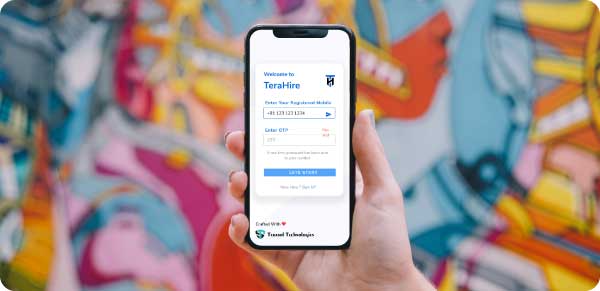How To Avoid App Development Failures
68.7% of Mobile Apps Never Hit the Thousand’s Download Mark, Scary right? Let’s Find Out How to Avoid This!
App Development Failure: The Critical Reasoning
With 218 billion apps for 6.25 billion smartphones users across the globe, the supply side of apps is nowadays visibly greater than the demand. This makes the chances of your app’s starlight success thinner than the silver thread itself! To make your app successful you need to make it a people’s favorite, like Netflix or YouTube. Here’s the list of eye-opening insights as to why this happens.
1. Short Term Benefits
People have a tendency to think in terms of short-term benefits. We simply don't spend enough time to
(a) learn about our consumers and
(b) incrementally enhance the app over time. Businesses need to start thinking about years instead of months or weeks.
2. Fails to Add Value in Daily Life
Ask yourself, can you pinpoint the issues that your consumers are having and address them via an app? When mobile apps help a user in solving a problem, they create more value in their life. If not, the user will eventually uninstall your app.
3. Too Heavy for Instant Availability
We went from the sudden boom of ‘we have an app for everything to we have too many apps for everything’. Some apps are too heavy for phone storage to download instantly and lose their user to their competitors.
4. Complicated Long-term Engagement
Businesses don’t update their app features or engage their customers frequently. As marketers, we must concentrate on developing long-term connections with mobile customers in order to keep them engaged with the business.
Flipping the Table with Smart Choices
Although according to stats 80% of app startups fail but say you have an exceptionally invested audience you can make it up to that 20% who don’t. Before you hit the call button to connect with a developer here’s a self-assessment you need.
Q.1 Do I have a user base that engages with my product daily?
If you have a product where the users engage with your services regularly having an app will ensure instant access and convenience which will make your business more successful and reliable.
Q.2 Will having an app installed improve my user’s life in the long term?
Put yourself in the shoes of users, do you really need to make it to their cellphones? Will having your app speed up their daily tasks and routine? If yes, then an app might actually be a good idea.
Q.3 Do my competitors see success with their app launches?
The smart ones always learn from the mistakes of others. Do a competitor analysis beforehand and see how a mobile app is adding up to their overall revenue. If it helps them achieve an exponential profit then adding an app might be a good idea for you as well.
Q.4 Are there areas where my app can help users become more efficient?
If your app adds value to your user’s life the chances of sucess gets higher. Before you create an app development strategy create a list of areas where your app can be of great help to the users. This will help in better app development planning and its sucess.

Have a Huge YES to the Above Questions?
Embark on The App Development Journey Today!
Reasons to Not Invest in App Development
Companies spend thousands of dollars on building apps, fail then fail.
So, before making a hole in your pocket, consider these reasons before you start investing in apps in upcoming years.
Because of the Magic Word SEO
So the first reason to avoid investing in apps is SEO. Why?
For instance, You own an e-commerce store where you sell trending clothes, named ‘Wardrobe’. Your customers won’t get your app if they search for trending clothes in the Play store/ Apple store. They particularly have to search for your brand name, which they might not be aware of.
This is because one can’t do SEO of a mobile app. ASO or app store optimization can help you, but it’s not a simple catwalk for you to build an app and then attain a good ranking in this growing competition. It’s a difficult and erratic plunge.
Some of Them are iOS/ Android Only Apps
Users of smartphones are always arguing the relative benefits of iOS and Android. While some developers argue that Apple's OS is more user-friendly, it is also a far more tightly managed system.
One of Android's greatest assets is its openness, which gives app developers more freedom. When you are a start-up and thinking of investing in apps, you have to strategically decide which app platform to go for android, iOS, or both.
The cost of development goes high when targeting both, as you might need to pay for both the stores. As a start-up, it’s necessary you invest in mobile apps smartly and start the journey with other alternatives.
Compatibility Problems with Different Devices
Sometimes customers are unable to download an app as their device is not compatible with the app. It either happens when the app is too outdated user has the latest mobile version, or the app doesn’t support older versions of the mobile phone the user have.
Before investing in apps, you have to research what devices you want your app on. While one likes to believe that all users will access our mobile applications through the devices businesses designate, the true business fact is that users will most likely use a range of "non-standard" devices too.
Memory Wastage of Your Phone
In a country like India, the maximum RAM one has is near to 4 GB on average, so what if my storage doesn’t support installing more applications. Mostly the phone storage is on the edge. Seeing the storage the apps required customers mostly opt for apps already on the phone or leave the thought of buying for later.
Also downloading it every time we need to buy something we see is a tiring task. Why install the app that takes space up to 25 MB on Android and 60 MB on iOS devices, when there is an available alternative that requires only 150 KB of data storage.
Maintenance of Mobile Apps is High
Google and Apple keep changing their policies. When you are a start-up or even an established organization, you have to keep your app updated. It becomes costly for a small or medium business to invest in mobile apps.
Due to these occasional changes in policy or features, the company may need to incur the cost of an in-house developer. This in-house developer has to ensure the app is following the apple/ google guidelines, and the app features are updated frequently to provide a great user experience.
It will increase the amount of investing in apps, their development, and maintenance.
Tired of Updating the App Repeatedly
Even users get tried to update their app frequently. People like me, don’t even update their apps till we get a warning we can’t use them after a few days.
Updating apps is not only tiring, as we literally have 40 apps waiting to get updated on our phones but also takes up more of our phone space.
On the other hand, a web app is always updated.
Problem Solved like Deep-Linking
Deep links are a surefire approach to improve the user experience and boost conversion rates. The deep link branching takes these click-through users directly to the company app/ website. Unfortunately, most organizations that don't use branches have a 50-60% click-to-open app rate. That implies five of those ten users will not be able to access the app and will instead be directed somewhere else, mostly to the web.
The web makes deep-linking easy and can get you more click-through-rates if all the links are directed to the web.
So, before you go investing in apps, do go through these measures or better go for alternative solutions.
As I mentioned at the start, there is a solution that is booming but hasn't been used to its full potential. It’s time for the reveal.

Even top companies like Ola, Pinterest, Flipkart, Starbucks, Forbes, and many others have shifted their approach from apps.

Ready to Build Next-Gen User Centric Applications?
Exploring the Alternatives to App Development
Although investing in the app right away might not be a great option exploring the alternatives is a must. Here are a few alternatives that ensure your user’s mobile navigation remains smooth and interactive:
MVP
A MVP or a minimum viable product only has the most important functionality. It can help assist you in determining whether your idea is interesting, testing marketability, assisting in selecting the appropriate features, and reducing total development time and cost.
With MVP, companies can start small and scale up to create a better, more polished product – all while leveraging user knowledge to make the best product decisions.

PWA
PWA or Progressive Web App development is basically the hybrid of websites and mobile apps. It runs on mobile browsers and provide app-like navigation to users. PWA technology has the potential to help businesses get up to 12x more users while using up to 300 times less storage than native apps.
PWAs offer many great features:
- Full responsiveness and have browser compatibility
- Connectivity independence
- Native app-like interface
- Auto-updates
- Safe and secure
- Easy discoverability and installation
- Works offline
- Less storage
Read More On PWA

App Clips
App clips are miniaturized copies of ordinary iOS apps that allow users to access a specific feature without downloading the complete app. The clips are small and easy to open, allowing users to get back to business quickly. App clips can help increase the number of users by delivering convenience and reliability. Because of the rapid engagement with the app, App Clips is bringing in a lot of conversions for a lot of businesses.
- Enhances customer engagement
- Help with Payments
- Assist with advertising
- Get Offline Support
- Helps in Branding
- Connect with your customers in a contactless manner
App Clip introduces a new way for developers to attract consumers from the real world. The options of using App Clips are boundless.

Invest in Creating Disruptive Tech Solutions Today
You can also be amongst 18% companies competing with leaders
A Few Burning FAQs
I already have a mobile app that is semi-functional, should I ditch it since I see it's used by a few users?
You don’t have to ditch the native app all of a sudden. Parallelly develop PWA or App Clip (depending on your OS). Let your user and new customers try those and get used to this new and native app-like experience. They have higher user engagement and conversion rates.
I jumped into developing an app but realized mid-way it might not work, what should I do with the existing product?
You can go for MVP development. Creating an MVP helps you avoid adding features that aren't needed or wanted to your first product. It implies that your new customers will receive a straightforward product that does exactly what it claims to do.
It can help you analyze and see what will work in the market and save your resources.
I’m on a budget but the brand needs mobile-friendly solution, what are the alternatives I have?
PWAs are fantastic options to start because they take less time to design and publish. If you think it's necessary, you can always install a native app later. Because of the form factor's versatility and the fact that PWAs are significantly more accessible, you can organically reach a lot larger audience than you could with a native app.
Are PWA and MVP cheaper than mobile app development?
A progressive web app is less expensive to produce than a native app. You'll need to learn the language and create a version for each platform if you're making a native app. This implies you'll need at least two iOS and Android versions, as well as the resources to maintain and upgrade each one.
Who should invest in Native apps?
Let's look at several business scenarios that necessitate the use of a native app:
- Your app necessitates integrations with hardware components.
- For both Android and iOS, push notifications are a must.
- It is necessary to use biometric authentication.
- Businesses that already have an online presence but require strong branding assistance.
- It's either a game or an augmented reality solution.
These are designed for well-established businesses that want to go all out to build a strong online presence while keeping a good return on investment in mind.



